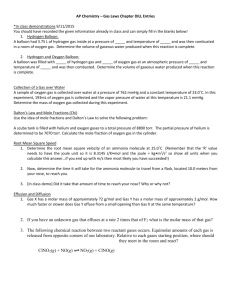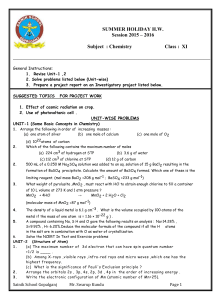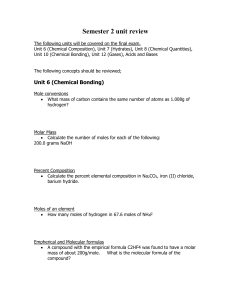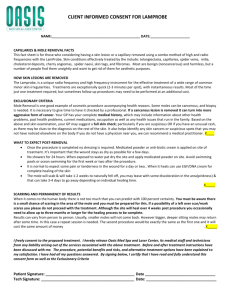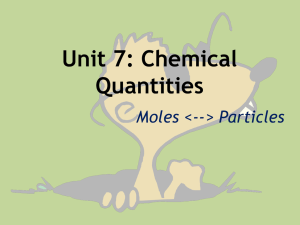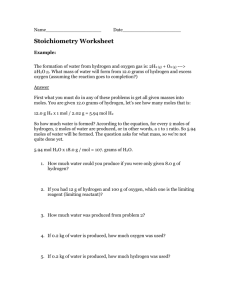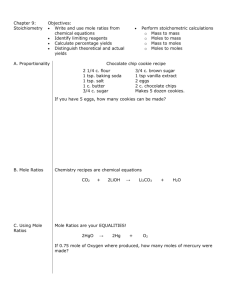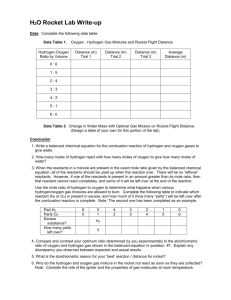Warm-up: 1. Create yourself a sandwich using your choice of the
advertisement
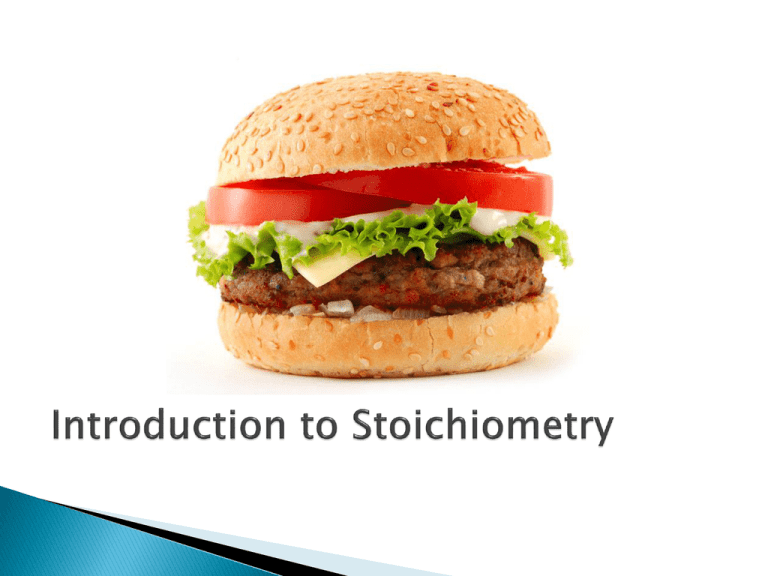
Although you might not realize it, you make these kind of predictions every day (your warm-up for example). What do these types of predictions all have in common? A Ratio! Each ratio consists of types of things you need in the equation/recipe and their coefficients (how many of each you need). The “wanted” item is always in the numerator, and the “given” term is always the denominator. Numerator: # on top Examples: 2 Cheese 1 Cheeseburger Denominator: # on bottom 5 pickles 1 Cheeseburger Practice: 1. If a recipe for 1 cake calls for 2 cups of flour, ½ cup of sugar, 1 cup of milk, and 3 eggs, how many eggs does it take to make 50 cakes. 2. A peanut butter and jelly sandwich consists of 2 slices of bread, 3 spoons of peanut butter, and 4 spoons of jelly. Calculate the number of spoons of peanut butter needed to make a half a sandwich. A mole ratio is a mathematical expression that shows the relative amounts of two items involved in a chemical change. Each mole ratio: - - Comes from a balanced chemical equation Shows the number of moles of each substance Show the mole coefficient for the “wanted” substance in the numerator and the mole coefficient for the “given” species in the denominator. Write the mole ratio needed to predict the amount of hydrogen that will react with 6.5mol of oxygen gas to produce water. 2 H2(g) + O2(g) 2 H2O(g) M.R. 2 : 1 → 2 Write the mole ratio needed to solve the problems below. Don’t worry about solving the problem just yet. Just tell me the mole ratio. 2 H2(g) + O2(g) 2 H2O(g) How many moles of oxygen are needed to react with 4.8 mol of hydrogen? 1. How many moles of water can be produced from the reaction of 8.0 mol of hydrogen? 2. 3. How many moles of hydrogen are needed to produce 10 mol of water? Write all the possible mole ratios for the following balanced chemical equation. N2(g) + 3H2(g) 2NH3(g) The steps to perform a mole-mole calculation: 1. 2. 3. Write a balanced chemical equation for the rxn Identify the “given” and “wanted” substances and list relevant information under each substance in the equation. Multiply the given amount by the mole ratio Calculate the amount of oxygen gas required to burn 287 mol hydrogen. 2 H2(g) + O2(g) 2 H2O(g) 1. Carbon disulfide is a colorless, foul-smelling, flammable, poisonous liquid. It is a widely used solvent for rubber in manufacturing processes. It can be prepared by a direct reaction of carbon with sulfur. 4 C(s) + S8(s) 4 CS2(l) Calculate the number of moles of carbon needed to react with 346 mol of sulfur to produce carbon disulfide. 2. Hydrogen gas can be produced by reacting zinc metal with hydrochloric acid. Zn(s) + 2HCl(aq) H2(g) + ZnCl2(aq) Calculate the moles of hydrogen gas that can be produced from the reactions of 45.8 mol of hydrochloric acid.

